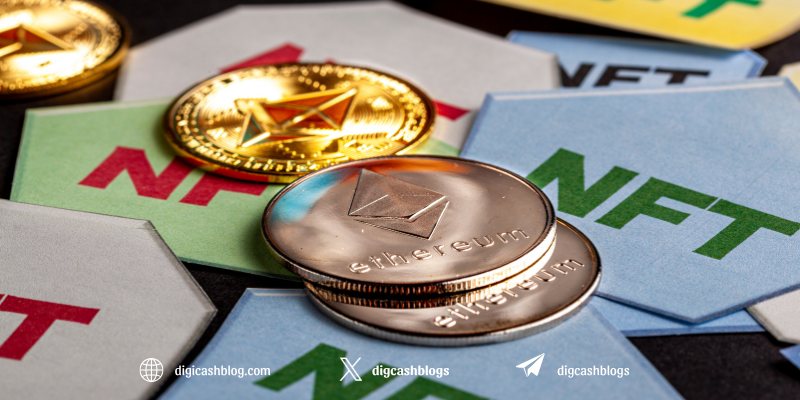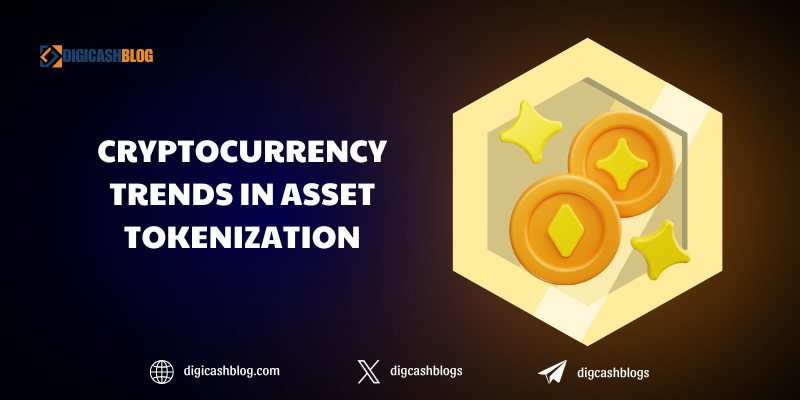Introduction to Asset Tokenization in the Cryptocurrency Space
Asset tokenization, a transformative application of blockchain technology, involves converting real-world assets into digital tokens on a blockchain. These assets range from real estate and art to financial instruments and intellectual property. The keyword Cryptocurrency trends in asset tokenization highlights the growing synergy between digital currencies and tokenized assets, reshaping investment and ownership models. By leveraging blockchain’s immutability, transparency, and decentralization, tokenization democratizes access to assets, reduces intermediaries, and enhances liquidity. This article explores the latest trends, opportunities, and challenges in this dynamic field.
Why Asset Tokenization is Gaining Traction
Enhanced Liquidity for Illiquid Assets
One of the most significant Cryptocurrency trends in asset tokenization is the ability to unlock liquidity for traditionally illiquid assets. Real estate, for instance, often requires substantial capital and long holding periods. Tokenization allows fractional ownership, enabling investors to buy and sell smaller portions of high-value assets as tokens on blockchain platforms. This fractionalization lowers entry barriers, making investments accessible to a broader audience.
Blockchain’s Role in Security and Transparency
Blockchain’s decentralized ledger ensures that tokenized assets are securely recorded, with transactions verifiable by all network participants. Smart contracts automate processes like ownership transfers and dividend distributions, reducing reliance on intermediaries like brokers or banks. This transparency and automation align with Cryptocurrency trends in asset tokenization, as investors increasingly seek trustless systems for managing digital assets.

Key Trends Driving Asset Tokenization
Rise of Real-World Asset (RWA) Tokenization
The tokenization of real-world assets (RWAs) is a dominant trend in 2025. Assets such as real estate, commodities, and even collectibles like rare art or vintage cars are being tokenized on platforms like Ethereum, Polygon, and Binance Smart Chain. For example, platforms like RealT and Propy enable fractional ownership of properties, allowing investors to hold tokens representing a share of real estate. This trend aligns with the growing adoption of decentralized finance (DeFi), where tokenized assets are used as collateral in lending protocols.
Integration with Decentralized Finance (DeFi)
DeFi’s integration with asset tokenization is revolutionizing financial markets. Tokenized assets can be used in DeFi protocols for lending, borrowing, or yield farming. For instance, a tokenized real estate asset can be staked in a liquidity pool to earn interest, blending traditional investments with crypto-native opportunities. This synergy is a key driver of Cryptocurrency trends in asset tokenization, as it bridges traditional finance (TradFi) and DeFi ecosystems.
Emergence of Security Token Offerings (STOs)
Security Token Offerings (STOs) are gaining momentum as a regulated alternative to Initial Coin Offerings (ICOs). STOs represent tokenized financial securities, such as equity or bonds, compliant with securities laws. Platforms like Securitize and Polymath facilitate STOs, ensuring regulatory compliance while leveraging blockchain’s efficiency. This trend reflects the maturation of the crypto market, as institutional investors demand regulated, tokenized investment vehicles.

Opportunities in Asset Tokenization
- Democratizing Investment Access
Asset tokenization lowers the financial barriers to high-value investments. For example, a $1 million property can be tokenized into 1,000 tokens, allowing investors to purchase stakes as low as $1,000. This democratization aligns with Cryptocurrency trends in asset tokenization, enabling retail investors to participate in markets previously reserved for high-net-worth individuals.
- Global Market Access
Blockchain’s borderless nature enables tokenized assets to be traded globally, 24/7. Investors from different regions can access tokenized assets without the constraints of traditional financial systems, such as banking hours or geographic restrictions. This global accessibility enhances market efficiency and liquidity, a hallmark of current Cryptocurrency trends in asset tokenization.
Challenges to Overcome
- Regulatory Uncertainty
Despite its potential, asset tokenization faces regulatory hurdles. Different jurisdictions have varying rules for tokenized securities, creating compliance challenges for platforms. For instance, the U.S. Securities and Exchange Commission (SEC) classifies many tokens as securities, requiring strict adherence to regulations. Navigating this complex landscape is critical for the widespread adoption of tokenized assets.
- Scalability and Interoperability Issues
Blockchain networks like Ethereum face scalability issues, such as high gas fees and slow transaction times during peak usage. Additionally, interoperability between different blockchains remains a challenge, as tokenized assets on one chain may not easily interact with another. Solutions like layer-2 scaling (e.g., Optimism) and cross-chain bridges are addressing these issues, but they remain a barrier to seamless adoption.
Future Outlook for Asset Tokenization
The future of Cryptocurrency trends in asset tokenization is promising, with advancements in blockchain technology and regulatory frameworks driving growth. By 2030, analysts predict that tokenized assets could represent a multi-trillion-dollar market, encompassing everything from real estate to intellectual property. Emerging technologies like zero-knowledge proofs and sharding will enhance privacy and scalability, further fueling adoption. Additionally, as central bank digital currencies (CBDCs) gain traction, tokenized assets may integrate with CBDC ecosystems, creating new financial paradigms.
